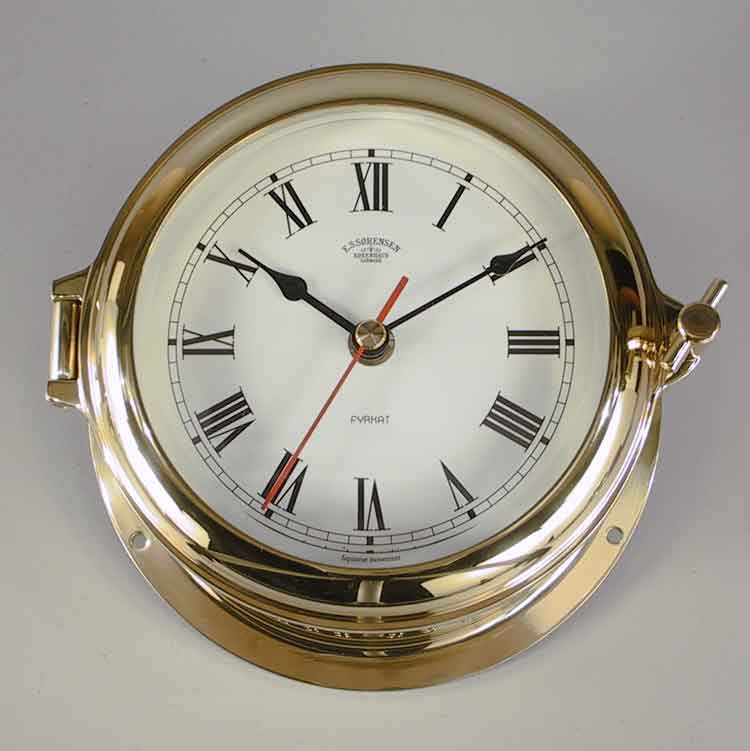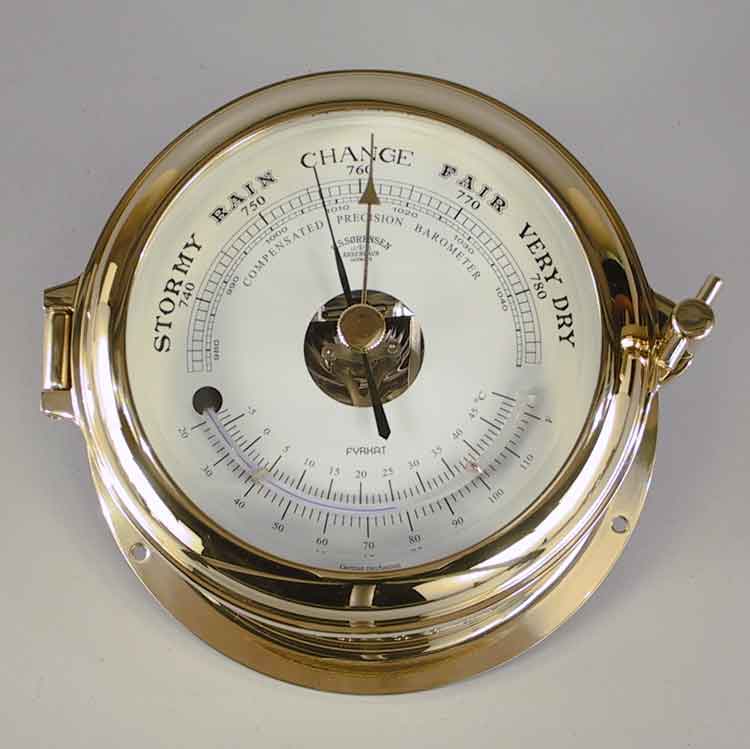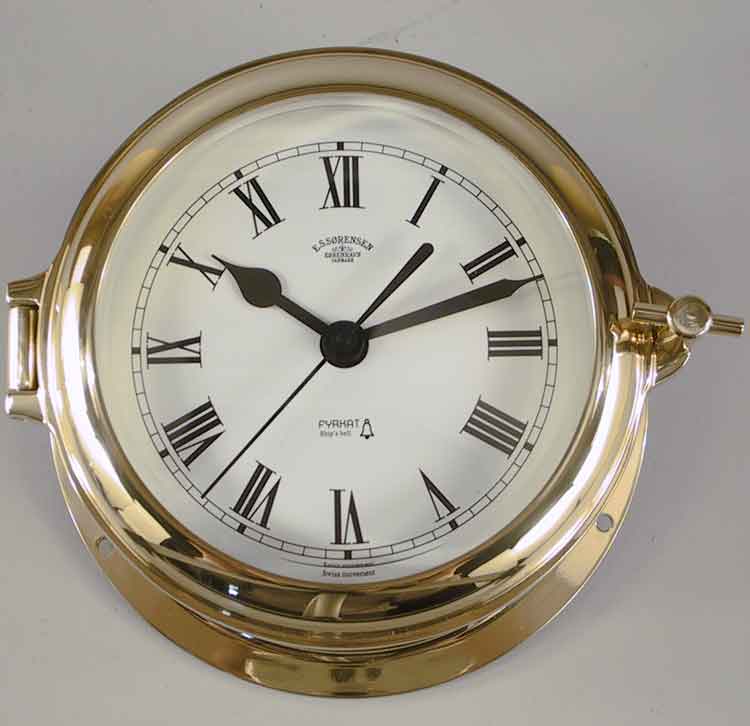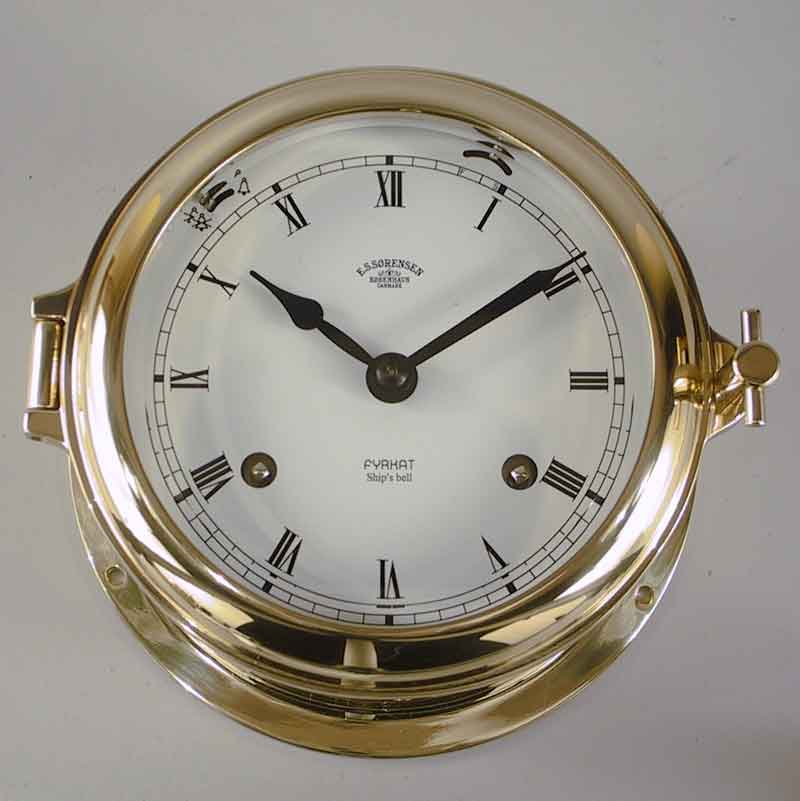The E.S.Sørensen Fyrkat series of lacquered polished brass instruments
The latest Fyrkat instruments by E.S.Sørensen are very solidly and carefully constructed down to the last detail, and so becoming worthy successors to the former 4'' and 4½'' E.S.Sørensen ranges. Up till now we have not considered to produce a 6'' range.
The brass-casing is forged in one piece making an air-tight protection of the instruments against damp from a wall. The brass-casing has been highly polished before the surface treatment - a strong lacquer.
All instruments' controls (adjusting or changing battery) to be found frontwards, that is, access through the opening of the hinged door.
Measures:
Dial diameter ø99 mm. Front flange ø124 mm.
Wall flange diameter ø141 mm.
Depth 80 mm.
Quartz clock
Roman figures »Fyrkat« design.
Quartz movement made by Japanese Seiko Works.
Battery size AA (LR06) 1,5V
Hand polished and lacquered brass. Weight 1.400g
Article no.: 30 51 01

Temperature compensated, measuring the pressure of the atmosphere in millibars, millimeters and inches. Barometer mechanics made by German Vilbor.
Instrument assembled in Denmark.
Thermometer measuring in °Centigrade and °Fahrenheit.
Hand polished and lacquered brass.
Weight 1.500g
Article no.: 30 55 01

Roman figures »Fyrkat« design.
Quartz ship's bell movement made by Schatz of France.
Battery size AA (LR06) 1,5V
Hand polished and lacquered brass.
Weight 1.450g.
Article no.: 30 52 01

Roman figures »Fyrkat« design.
Clock work made by German Hermle. Instrument assembled in Denmark.
Hand polished and lacquered brass.
Weight 1.700g.
Article no.: 30 54 01
Why ship's bells?
Ship's bells are a system to indicate the hour by means of bells, used aboard a ship to regulate the sailors' duty watches. Unlike civil clock bells, the strikes of the bell do not accord to the number of the hour. Instead, there are eight bells, one for each half-hour of a four-hour watch. Bells would be struck every half-hour, and in a pattern of pairs for easier counting, with any odd bells at the end of the sequence. The system is (in this example beginning with the afternoon watch): 12.30: One strike, 13.00: Two strikes, 13.30: Three strikes, 14.00: Four strikes, 14.30: Fives strikes, 15.00: Six strikes, 15.30: Seven strikes, 16.00: Eight strikes, 16.30: One strike (the first dog watch begins)...... and so on! The advantage is that you also on the half-hour strikes are informed what time it is!
Home
